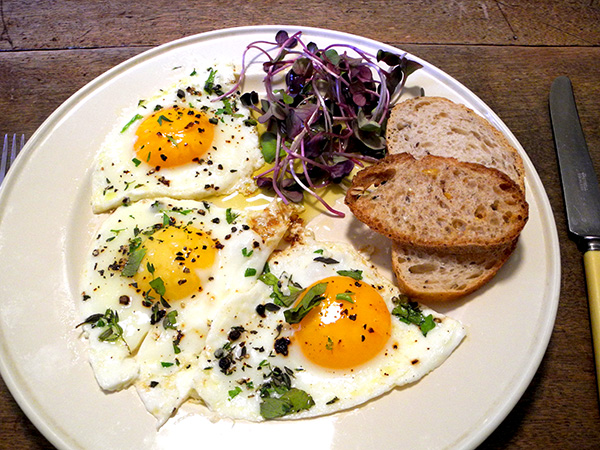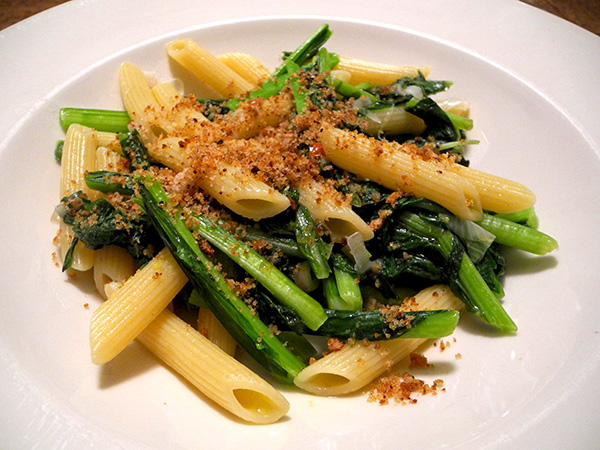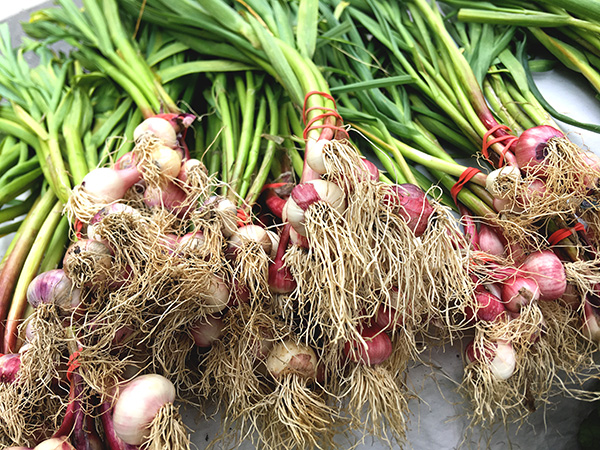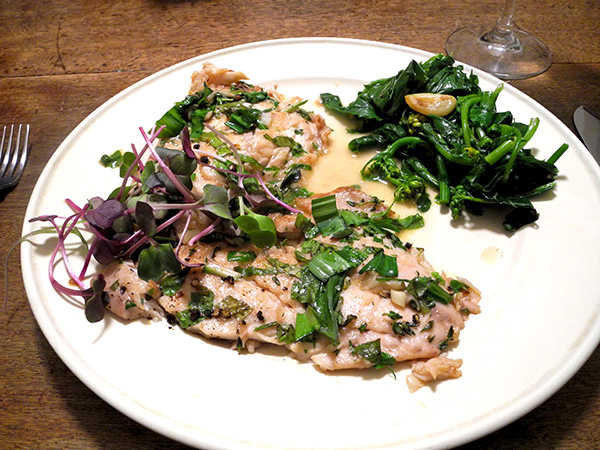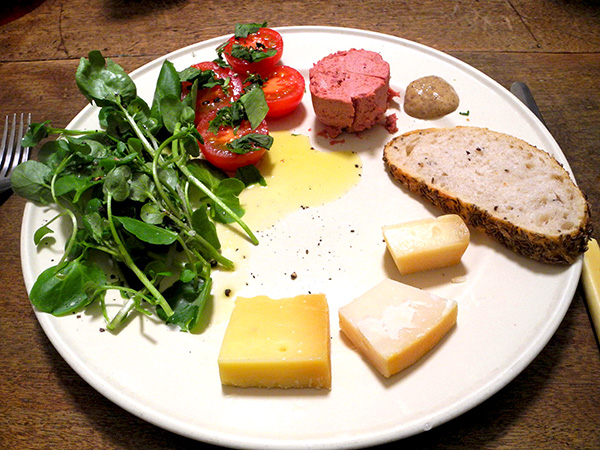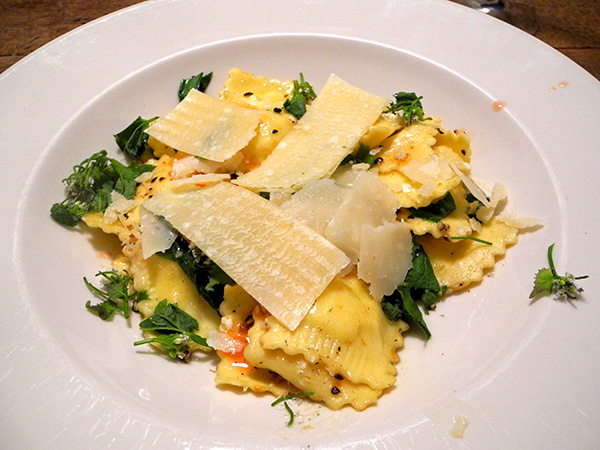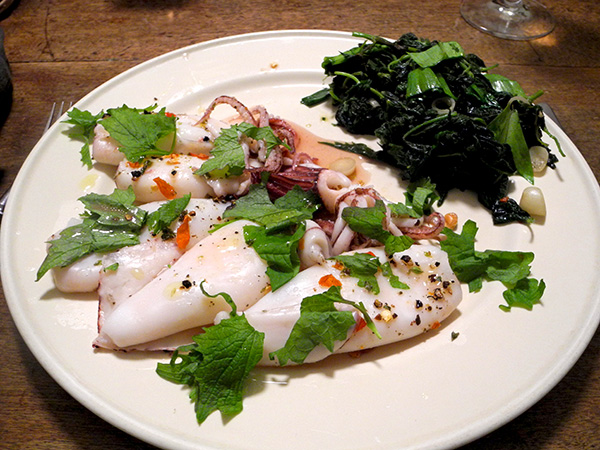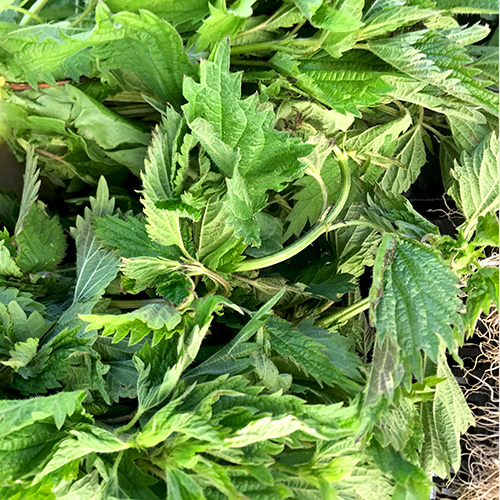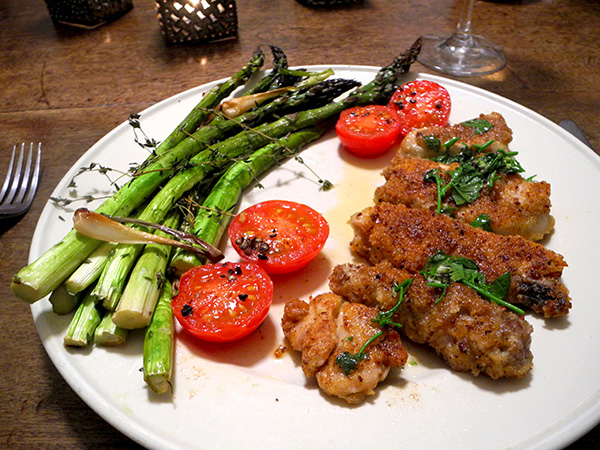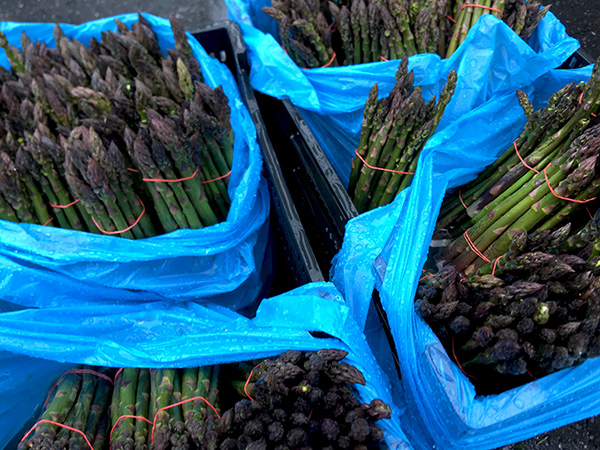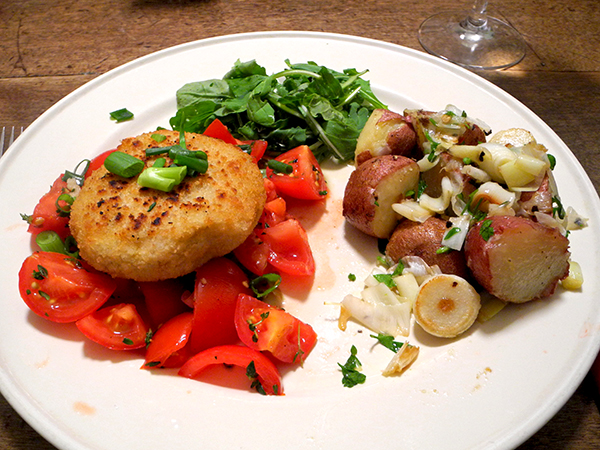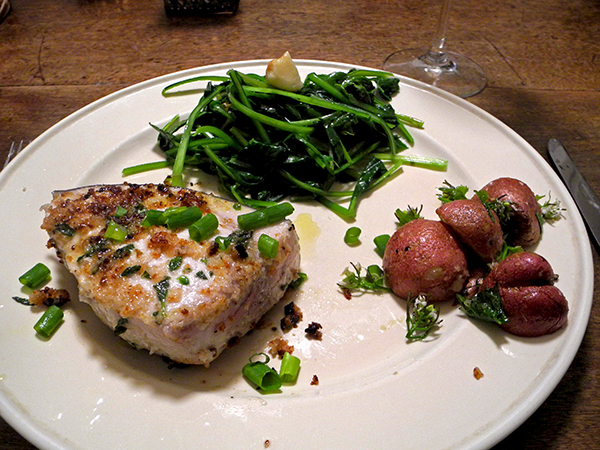
Super.
This was one of the best swordfish entrées I’ve ever had. I can’t account for the reason, taste, texture, and a good appearance came together to present us with a certain kind of perfection. It must have started with the fish’s extraordinary freshness, since I’m aware of the large variable in the number of days between a swordfish catch in deep waters and its arrival in a market stall, even when the fishmonger can be depended on for freshness and the stall is close to the fisherman’s port.
The other obvious variable is the competence – or, often as not, the luck – of the cook. I cook swordfish regularly, and know what I’m doing, but I was really lucky this time.
I had on hand a few tiny potatoes, and I thought this was as good an opportunity as any to make good use of them before they would, so to speak, return to the earth. Even more of a recommendation for adding them to the dinner was the delicate garnish (actually, more than a garnish) of young garlic mustard [alliaria petiolata] which I had picked up the same day as the swordfish.
The green vegetable was something I had never come across before Saturday, but I’ll now be keeping my eye out for it. In addition to its general rareness, Japanese mustard spinach (or Komatsuna) is apparently unable to withstand summer heat, so it’s available only in the spring and the fall, but it’s well worth the hunt. My Greenmarket purveyor was Gorzynski Ornery Farm, owned, together with his wife and family, by John Gorzynski, a local farmer whose integrity is famous, second to none, for decades a powerful advocate for organic agriculture and small-scale growers.
Mustard spinach is neither mustard, nor spinach, but a member of the enormous Brassica rapa family.

- one 13-ounce swordfish steak from P.E. & D.D. Seafood in the Union Square Greenmarket, halved, then marinated for half an hour in a mixture of olive oil, the white sections of 2 thin scallions from Tamarack Hollow Farm, chopped, fresh oregano leaves from Stokes Farm, and a very small amount of crushed dried Sicilian pepperoncino from Buon Italia, the steaks drained well, covered on both sides with a coating of homemade dried breadcrumbs, pan-grilled over medium-high heat for 4 to 5 minutes on each side, removed to 2 plates, seasoned with sea salt, some sweet local lemon juice from Fantastic gardens of Long Island squeezed on top, sprinkled with some of the green scallion leaves, chopped, and drizzled with a little olive oil
- four small Red Norland Potatoes from Berried Treasures, boiled in well-salted water, drained, dried in their still-warm vintage Pyrex glass pot, rolled in a little olive oil, seasoned with sea salt and freshly-ground Tellicherry pepper, sprinkled with flowers and some smaller leaves of several stems of garlic mustard from Windfall Farms
- one bunch of mustard spinach from Gorzynski Ornery Farm, wilted inside a large enameled cast iron pot in a little olive oil in which one halved clove of very good Christopher Garlic Ranch garlic from Eataly had been allowed to sweat, seasoned with sea salt, freshly-ground Tellicherry pepper, and a very small amount of the same crushed dried Sicilian pepperoncino used in the swordfish marinade, finished on the plates with a drizzle of juice from the same sweet local lemon used on the fish, and a bit of olive oil
- the wine was a Portuguese (Tejo) white, Casa Cadaval Padre Pedro Tejo 2014, from Chelsea Wine Vault
- the music was the the gorgeous 1918-1920 Walter Braunfels opera, ‘Die Vogel’ [Ger: The Birds], “..a lightly touched allegory loosely based on Aristophanes, in a performance of Lothar Zagrosek conducting the Deutsches Symphonie-Orchester Berlin and the Berlin Radio Chorus, with soloists Wolfgang Holzmair, Hellen Kwon, Matthias Goerne, Michael Kraus, and others
